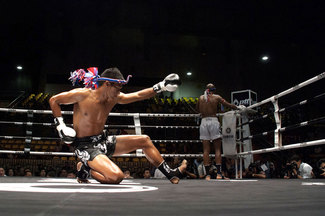CHURCHES IN THAILAND – A HISTORY OF TOLERANCE SET IN STONE
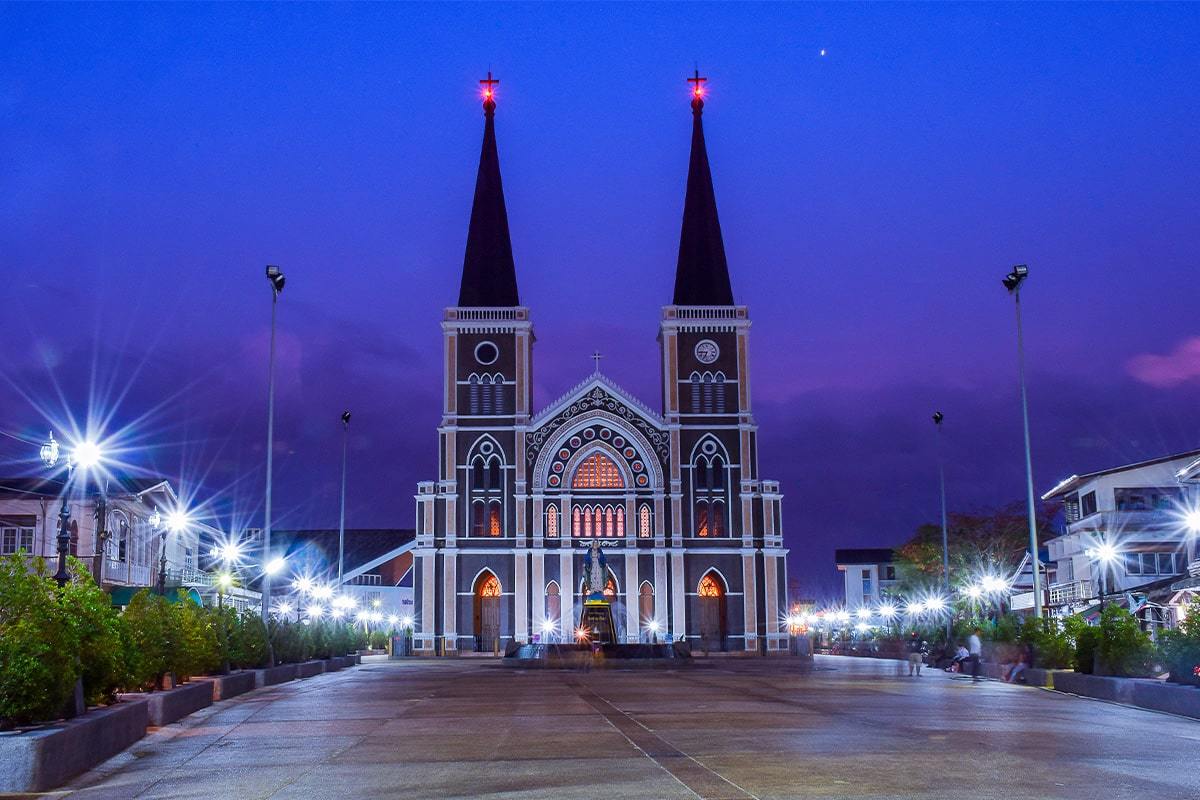
Early contacts
Giovanni Pietro Maffei (1533–1603), who wrote about the activities of the early Christian missionaries in the orient, claimed that in 1550 or thereabouts a French Franciscan by the name of Bonferre arrived in Thailand and attempted to spread the good word for about three years with little result. In 1553 a number of Portuguese vessels docked in Ayutthaya and some three hundred soldiers entered the king’s army as mercenaries. Two Dominican fathers, Sebastiâo da Canto and Jeronimo da Cruz, subsequently joined them as chaplains, establishing three parishes in Ayutthaya, by which time the number of local converts numbered around 1,500. Both of these men were unfortunately killed during the Burmese conquest of the city in 1569 and were eventually succeeded by other Franciscan friars, one of whom, Louis Fonseca, was also martyred in 1600.
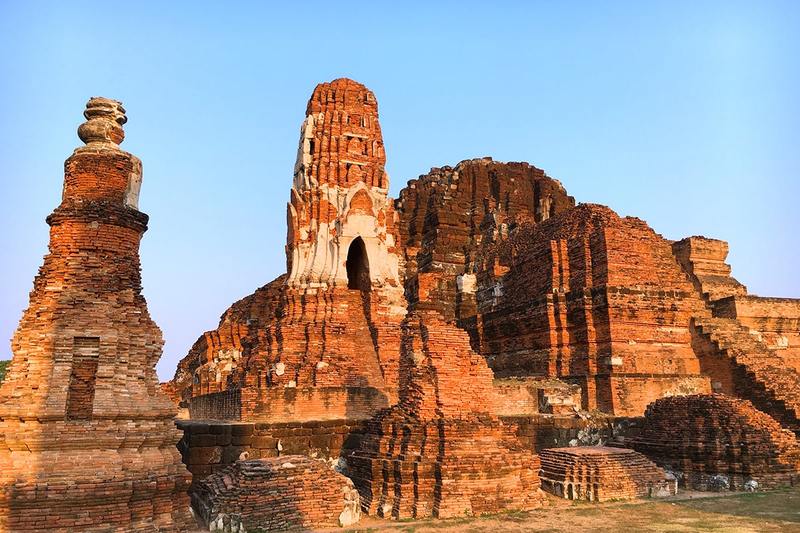
All that remains today of the once magnificent capital, Ayutthaya
Cosmopolitan Capital
At the time Ayutthaya was one of the world’s largest cities and an international entrepôt for trade, with merchants from all over Asia and Europe undertaking commercial trips to the kingdom and often residing there in quarters assigned to each nationality by the king at his pleasure. Peguans, Cochinese, Chinese, Japanese – many of whom were Christian and lived in Ayutthaya to escape growing persecution at home – Javanese, Portuguese, Dutch and English were all assigned areas outside the city walls in which to live and worship as they pleased in this cosmopolitan and for the most part tolerant city.
The French arrive
While the Dutch and English largely confined themselves to trade, the French missions to Thailand, beginning in earnest in the 1660s and leading to an exchange of embassies, had a decidedly proselytizing objective, culminating in a palace revolution to oust the pro-French King Narai in 1688 and the expulsion of the French who had entertained ideas of conquest and conversion of the king and his subjects to Catholicism. Although the Jesuits were allowed to remain, relations between Thailand and France did not resume until the nineteenth century when Catholic and mainly American Protestant missions were allowed to establish churches in the kingdom and seek converts.
The Eastern Orthodox Church
The most recent Christian arrivals in Thailand have come from the Russian Orthodox Church which ministers to Russian tourists, residents and local converts as well as other European nationals who follow the Orthodox faith. Today there are a number of Russian Orthodox communes all over Thailand and in 2009 Archbishop Hilarion headed a delegation to celebrate the tenth anniversary of the Russian Orthodox Church’s advent in Thailand.
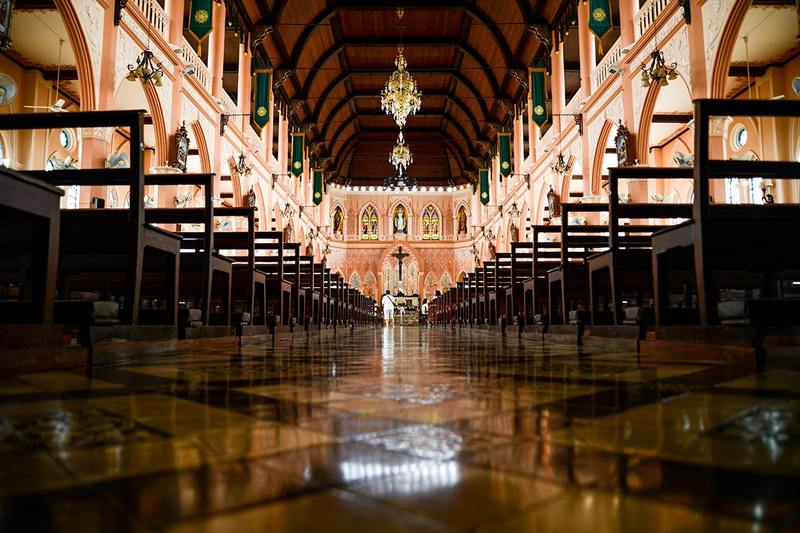
Beautifully elegant interior of the Cathedral of the Immaculate Conception, Chanthaburi
Cathedral of the Immaculate Conception, Chanthaburi
One the city’s most visible landmarks, the Cathedral of the Immaculate Conception, built on the site of a previous structure dating back three centuries, was inaugurated in 1909 and is one the country’s largest catholic churches. It has been described as the most beautiful church in Thailand and has become one of the highlights of a visit to the city. The Catholic community’s origins date from the early 1700s when Vietnamese refugees fleeing religious persecution settled in Chanthaburi and erected a chapel in 1711. As the community’s population grew the church was moved to its present site and extensively rebuilt and its present Gothic-style began construction in 1909 and obtained the status of a cathedral in 1944. A statue of the Virgin Mary is the cathedral’s centrepiece and is covered in hundreds of thousands of semi-precious gems, donated by the local congregation.


Portuguese legacy, Santa Cruz Church, Bangkok
Santa Cruz Church, Bangkok
The Portuguese community in Bangkok first built a church on the site around 1770 after the destruction of Ayutthaya by the Burmese, and served as the main Catholic church until the building of the Assumption Cathedral in 1821. The present building in Renaissance Revival style was designed by two renowned Italian architects Annibale Rigotti and Mario Tamagnoand completed in 1916, replacing a previous structure that had been constructed in 1845. The 19thcentury Santa Cruz Church building apparently had a decidedly Chinese look and the local residents called in Kudi Jeen, the Chinese Church, which became the name of the community that grew around the site.
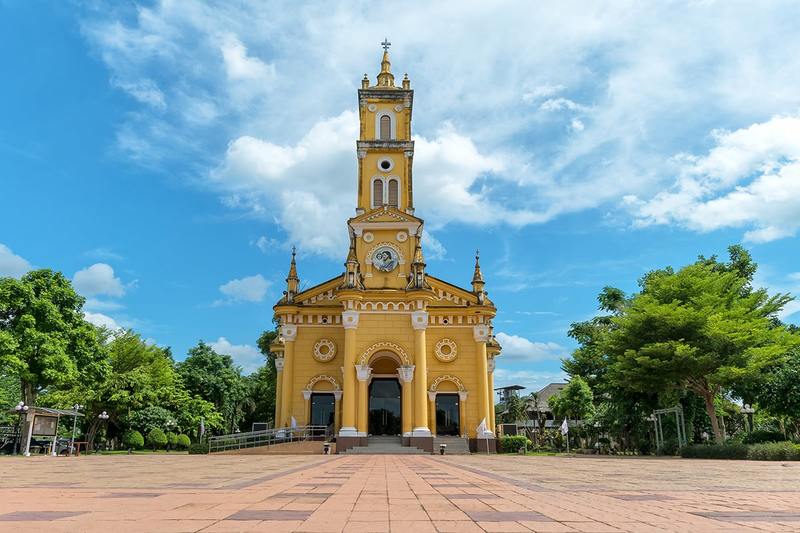
Resplendent in the tropical sunlight, St. Joseph’s Church, Ayutthaya
St. Joseph’s Church, Ayutthaya
Founded in 1666 and destroyed by the Burmese in 1767, St. Joseph’s Church in Ayutthaya was the headquarters of the French Catholic mission and has been rebuilt and renovated many times over the succeeding centuries. With its bright yellow exterior and distinctly Romanesque architecture the church makes a bold statement. Set in large, well-kept grounds near the river bank the building’s distinctive features are its clock tower, lovely stained glass windows and beautifully designed dome.
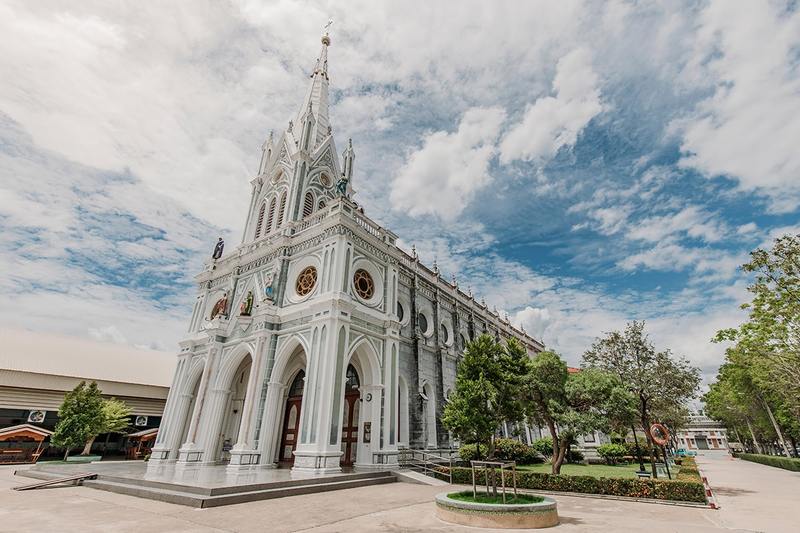
The gothic splendour of the Nativity of Our Lady Cathedral in Bang Nok Khwaek
The Nativity of Our Lady Cathedral
The very French Gothic style Nativity of Our Lady Cathedral in Bang Nok Khwaek in central Thailand, was constructed in 1890 by French missionaries, suffered bomb damage during World War II and was extensively renovated in 1994. It has long been considered one of Thailand’s most attractive churches, in Gothic style and built using pale grey stone, with an imposing spire and stained glass windows brought from Europe. The interior radiates light and has a very ornate alter and ceiling and a long congregational nave.
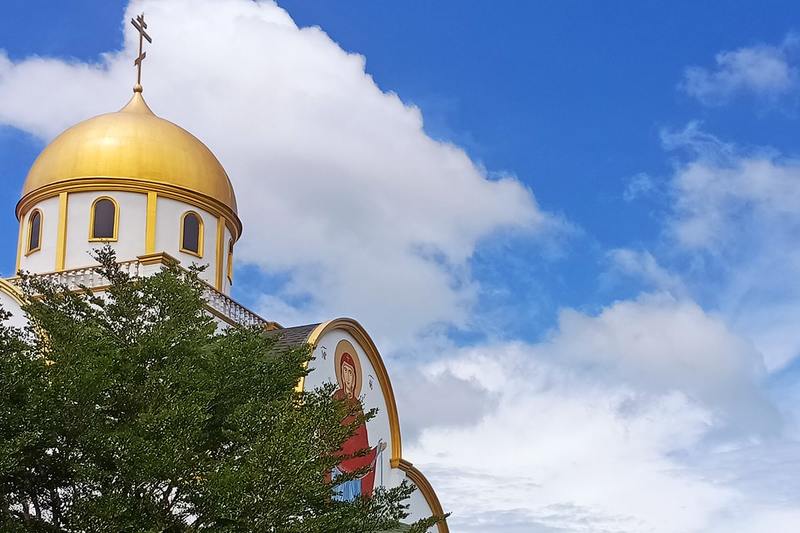
The distinctively Orthodox style of Russians churches in tropical Phuket
The Holy Trinity Church, Phuket
One of the most striking buildings in Phuket is the Russian Orthodox Holy Trinity Church, built in 2011 with funds from the local Russian community. Located in Thalang, not too far from the airport, the building’s striking cross-shaped design, brilliant white walls and golden dome gleam like a beacon over the surrounding farmland and rubber plantations. The interior is filled with images of Jesus and Orthodox saints and is decidedly grandiose and splendid throughout.
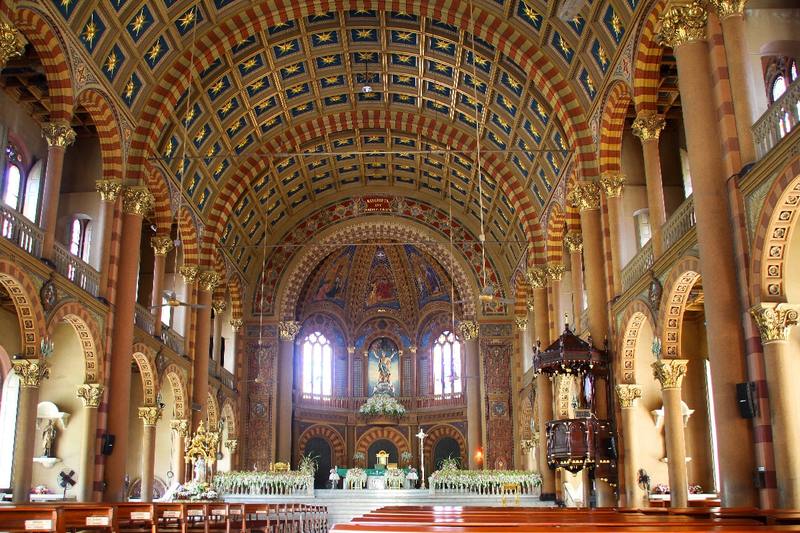

The stunning interior of Assumption Cathedral, Bangkok
Assumption Cathedral, Bangkok
About 100 metres along from the Oriental Hotel and the French Embassy is Bangkok’s Assumption Cathedral, Thailand’s principal Catholic church. Completed in 1821 and built from materials imported from Italy and France the cathedral was named in honour the Virgin Mary’s passage to heaven after her death. During the 19thcentury the church welcomed Christian missionaries to the country and formed part of collection of buildings, including the Assumption Printing Press, The Assumption Convent School and the Catholic Mission to Bangkok. The building underwent extensive reconstruction in the early 20thcentury and between1910 to 1918 was rebuilt in Romanesque Style. Extensive damage during the Second World War necessitated extensive reconstruction and restoration work and it was again refurbished in the 1980s during which time Pope John Paul II paid a visit. The cathedral has frequently played host to a number of visits from Thailand’s royalty.
History in brick and stone
The churches and cathedrals of Thailand stand testament to the country’s cosmopolitan outlook through the ages, a willingness to accommodate new ideas and customs without prejudice and a great deal of tolerance and understanding of others’ religious beliefs. These buildings are historical documents set in brick and stone.










of collaborative energy




Before proceeding to use the website please carefully ready our Terms and Policies
I accept Diwerent's Terms and Conditions and Privacy Policy











